your favorite z.5-hardy trees
arbo_retum
18 years ago
Featured Answer
Comments (33)
martieinct
18 years agolast modified: 9 years agoego45
18 years agolast modified: 9 years agoRelated Discussions
Euphorbia Martinii z.5 hardy?
Comments (14)Boy, brody, that sure has not been my experience! I happen to have a rather strange attraction to all manner of hardy euphorbs and have grown dozens of them over the years and I have not experienced any kind of dieback of hardy euphorbs with winter cold. (Lack of vigor is another issue altogether :-)) Nor is it very obvious in local gardens.......many species of euphorbia are borderline invasive here (characias, robbiae, certainly cyparissias and myrsinites). Even semi-tender species like E. mellifera don't seem to have much problem :-) Since you are further north and sometimes get that Fraser Valley cold, that may be an issue, but generally, if the drainage is very good, established, vigorous plants fly through PNW winters! Even the sudden, unusual single digit temps we experienced this past December. A drive through local neighborhoods right now will display various euphorbs - characias, robbiae and martinii primarily - in full bloom!...See MoreEuphorbia mart. Ascot Rainbow z.5/6 Hardy??
Comments (16)I was googling online about this very subject and was pleased to find this topic. Though I'm still unsure of answer. I purchased 3 of these from Santa Rosa Gardens when they were on sale. Then, upon recieving them, I started researching and getting conflicting info. Online,after a lot of browsing, sources state EVERYTHING from hardiness to zone 5, 6, 6B (whatever that is) to zone 7. The tag with the plants SEEMS to say hardy to minus 10 degrees, though it's hard to make out, as the "minus" sign in front of the 10 almost appears like a smudge. However, the site I got it from (Santa Rosa Gardens states zone 6). I'm growing in 3 pots for now, but would love to place in the ground. Consequently, would hate to lose them in our zone 6 winters (SW PA). Some plants I don't care if they may perish, others I like more... it must be novelty. It's SO hard for me to believe that one plant can be listed in so many diffferent sources as so many diff. hardiness zones. I always tend to plan for an unusually cold, nasty winter.. that may happen. I guess I could always dig up in late autumn and place in pots to store in protected area (basement). I do love the looks of this plant, and hey... if they must stay in pots, so be it. I'll be interested further on in more info about hardiness as it becomes more available. I also think of additional winter protection if they were in ground, but don't want to rot or otherwise harm a plant that doesn't seem to appreciate excessive moisture. I know my response to this is outdated, as compared to the original posts here....See MoreWANTED: z5 hardy cacti
Comments (3)thanks Jeffrey, but i have way too many to keep in pots. with a few exceptions i only keep species that can take the cold, and try to stick to those that can handle the moisture here. i stretch the limits on a few each year with mixed results. i made a cover of sorts to protect from too much snow and spring rain, but have become too lazy in recent years to bother with it. my biggest problem is deer and rabbits. if i pick all the fruit in the fall the deer dont bother with the plants too much, but the rabbits get a taste for the plants. a few species of the Opuntias are roubust enough that i have to "cut" them back a couple times per year. i have only lost a few plants to cold (and it was expected) but i have lost several to wet springs and rabbit damage. they usually come back from the rabbits, but are less than attractive or develope fungal infection at the wound site. the triglodiatus is one of my favorites, but i do need to protoect them from the wet, raising their planting site in the raised bed works pretty well, until they develop a large enough clump to hold water at their base, then i pick the best one from the clump and start over....See MoreWhat are your Favorite z5 OG for color and variety
Comments (20)Here are Jake's grasses: Where there are no numbers by the grass that means it is already counted for in another bed. Not all the grasses look really healthy as some had trouble getting through the winter. I know the wife has a couple of grasses in her perennial bed but I do not have them listed as grasses in my beds. Have a look as this is all I've got. (I might have missed a grass or two. Need to take a REALLY good inventory). Jake Grasses EAST FENCE BED 1) Panicum virgatum "Heavy Metal" (7) 2) Miscanthus sinensis "Puncktchen" (3) 3) Miscanthus sinensis "Morning Dew" (3) 4) Pennisetum alupecuroides "National Arboretum" (2) 5) Miscanthus sinensis "Malepartus" (2) WEST FENCE BED 6) Miscanthus sinensis "Jailbird Ben" (3) 7) Miscanthus sinensis "Yahu Jima" (3) 8) Miscanthus sinensis "Mt. Washington" (2) Pennisetum alupecuroides "National Arboretum" (3) 9) Calamagrostis acutiflora "Karl Foerster" (1) Miscanthus sinensis "Malepartus" (1) ORIGINAL BED Briza media " Hardy Quaking Grass" (9) Festuca glauca "Blue Fescue (3) Stipa tenuissima "Ponytails" (8) Festuca glauca "Elijah Blue" (2) Imparata cylindrical "Red Baron" (3) Eragrostis trichodes "Sand Love" (4) Panicum virgatum "Rehbraun" (1) Calamagrostis acutiflora "Overdam" (3) Festuca cinerea "Dwarf Fescue" (3) Koleria glauca "Hair Grass" (1) Deschampsia caespitosia "Northern Lights" (2) Herlictotrichon sempevirens "Blue Oat Grass" (2) Calamagrotis acutiflora "Karl Foerster" (2) Schizachyrium scoparium "The Blues" (1) Calamagrotis brachytricha "Reed Grass" (2) Panicum virgatum "Prairie Sky" (2) Miscanthus sinensis "Morning Light" (1) Schizachyrium scoparium "Blaze" (3) Miscanthus sinensis "Silberfeder" (1) DECK (North Side) Miscanthus sinensis "Grtacillimus" (3) Erianthus ravennae "Hardy Pampus" (1) DECK (South Side) Miscanthus sinensis "Silberpfeil" (2) Miscanthus purpurascens (3) NORTH BED Miscanthus sinensis "November Sunset" (2) Pennisetum alopecuroides "Hameln" (2) Pennisetum "Karly Rose" (2) ROCK GARDEN BED Miscanthus sinensis "Nippon" (3) Miscanthus sinensis "Bubbler Ben" (3) IN THE YARD Miscanthus sinensis "Bitsy Ben" (3) Miscanthus sinensis "Sarabande" (1) Chasmathium latifolium "Northern Sea Oats (2) WAITING TO BE PLANTED: Calamagrostis acutiflora "Kalr Foerster Varigated" (2) (Not yet readily available to the mass market). Miscanthus sinensis "Little Nicky" (2) Deschampsia caespitosa "Tuffted Hair Grass" (2) Back at everyone later. Jake...See Morediggingthedirt
18 years agolast modified: 9 years agomad_gallica (z5 Eastern NY)
18 years agolast modified: 9 years agodfaustclancy
18 years agolast modified: 9 years agoron48
18 years agolast modified: 9 years agoSue W (CT zone 6a)
18 years agolast modified: 9 years agoWendyB 5A/MA
18 years agolast modified: 9 years agoarbo_retum
18 years agolast modified: 9 years agomartieinct
18 years agolast modified: 9 years agoron48
18 years agolast modified: 9 years agomartieinct
18 years agolast modified: 9 years agoNHBabs z4b-5a NH
18 years agolast modified: 9 years agoron48
18 years agolast modified: 9 years agoWendyB 5A/MA
18 years agolast modified: 9 years agomartieinct
18 years agolast modified: 9 years agodiggingthedirt
18 years agolast modified: 9 years agoego45
18 years agolast modified: 9 years agoMonique z6a CT
18 years agolast modified: 9 years agoarbo_retum
18 years agolast modified: 9 years agoMonique z6a CT
18 years agolast modified: 9 years agotree_oracle
18 years agolast modified: 9 years agoterryboc
18 years agolast modified: 9 years agotree_oracle
18 years agolast modified: 9 years agomceller
17 years agolast modified: 9 years agoginny12
17 years agolast modified: 9 years agosalbwil
17 years agolast modified: 9 years agotree_oracle
17 years agolast modified: 9 years agomceller
17 years agolast modified: 9 years agomartieinct
17 years agolast modified: 9 years agopaigect
17 years agolast modified: 9 years agoWendyB 5A/MA
17 years agolast modified: 9 years ago
Related Stories

LANDSCAPE DESIGNGreat Design Plant: Retreat to the Shade of Hardy Catalpa
Big foliage and a towering height provide a shady respite in summer, but that's not all hardy catalpa offers dedicated gardeners
Full Story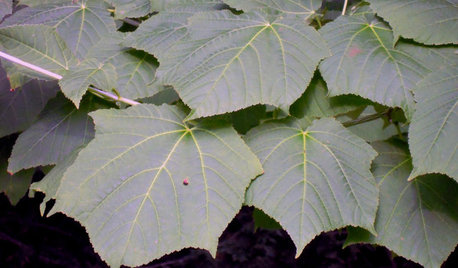
GARDENING GUIDES5 Amazing Small Maple Trees
There's more to maples than syrup. Expand your maple milieu with any of these 5 small and unusual trees
Full Story
EDIBLE GARDENSHow to Grow 10 Favorite Fruit Trees at Home
Plant a mini orchard in fall, winter or early spring to enjoy fresh-off-the-tree fruit the following year
Full Story
GARDENING GUIDES5 Best-Behaved Trees to Grace a Patio
Big enough for shade but small enough for easy care, these amiable trees mind their manners in a modest outdoor space
Full Story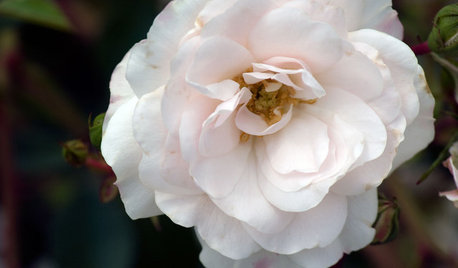
GARDENING GUIDES5 Favorite White Roses for a Purely Beautiful Garden
How does your garden glow? With roses that look like light and smell divine
Full Story
GARDENING GUIDES10 Cold-Hardy Succulents for Cool-Season Interest
These attractive plants shrug off colder temperatures, and many can be brought inside in containers in extra-chilly climates
Full Story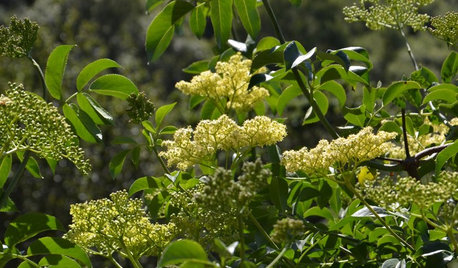
GARDENING GUIDESGreat Design Plant: Sambucus Nigra Caerulea for the Birds
Blue elderberry is a favorite of birds and other wildlife in its native California
Full Story
PETS5 Finishes Pets and Kids Can’t Destroy — and 5 to Avoid
Save your sanity and your decorating budget by choosing materials and surfaces that can stand up to abuse
Full Story
FALL GARDENING6 Trees You'll Fall For
Don’t put down that spade! Autumn is the perfect time for planting these trees
Full Story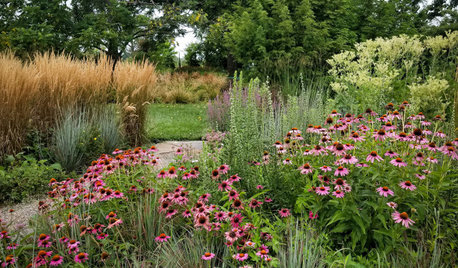
FALL GARDENING20 Favorite Flowers for the Fall Landscape
Vivid blooms and striking shapes make these annuals and perennials a delight in autumn gardens
Full Story


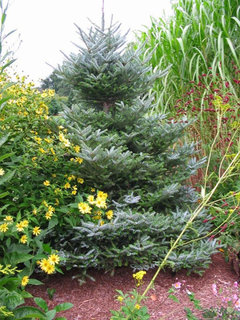


AdamM321